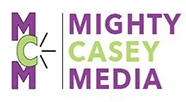From HX Refactored in Boston in June 2017, this – “Jeopardy Meets The Price Is Right, Healthcare Edition” HXR 2017: Casey Quinlan: Jeopardy + The Price Is Right: Health Care Mashup Edition from HxRefactored on Vimeo.
I’ve spent a good portion of the last two months on the healthcare equivalent of the political stump – called the “rubber chicken circuit” in political circles. Thankfully, there was no actual rubber chicken served during these sojourns, although there was the incident of the seductive breakfast sausage, followed by my solo re-enactment (off stage) of the bridal salon scenes from the movie “Bridesmaids.” I will draw the veil of charity (and gratitude for travel expense coverage) over the details of that incident, and just advise all of you to stick to fruit, cereal, or bagels at conference breakfasts. ‘Nuff said. My original editorial calendar plan was to turn this into a series of posts, broken down by focus into technology and clinical categories. However, since a big part of my goal in standing on the barricades at the gates of the healthcare castle, waving my digital pikestaff in service of system transformation, is breaking down silos … well, go grab a sandwich, and a beverage. This is gon’ be a long one. HIMSS Patient Engagement Summit In early February, I headed to Orlando for the first Health Information and Management Systems Society (HIMSS) Patient Engagement Summit. I was asked to participate in two panel discussions, one titled “Patient Perspectives: The State of Engagement,” the other “Can We Talk? The Evolving Physician-Patient Relationship.” Both were moderated by Dr. Patricia Salber, the bright mind behind The Doctor Weighs In. Being a person with no letters after her name (like Elizabeth Holmes [update: she’s trash, so redacted] and Steve Jobs, I’m a college dropout), I’m used to showing up at healthcare industry events and being seen as something of a unicorn fairy princess. That’s how people commonly called “patients” are usually viewed in industry settings outside the actual point of care. Healthcare professionals/executives are so used to seeing us as revenue units,…
The healthcare system is all about building patient engagement lately. Which makes me ask: if we get to engagement, will we ever get married? And if we do … will we wind up needing marriage counseling? Short answer: we already need marriage counseling, and we’re not even officially engaged yet. Herewith is the evidence that the doctor (and health system)-patient relationship needs marriage counseling, stolen adapted from a post on YourTango.com. You aren’t talking – Given the state of digital, or even analog, communication in healthcare, how can doctors and patients talk? Even when we’re in the same room, it’s conversation-us interruptus, given the whole 10 minutes we have for face to face interaction. And remember the last time you emailed your doctor with a question, and got an answer that day? Oh, right. That was the 14th of Never. Thank you, health IT infrastructure of doom, which is so dedicated to the security of our medical data that NO. ONE. CAN. SEE. IT. You see your partner as an antagonist – The healthcare system seems dedicated to keeping doctors and patients in an adversarial relationship. Doctors rat us out for our poor compliance in medication regimens without asking if we can afford said meds. Patients worry that their insurance premiums will go up if they tell the truth about stuff like smoking, or eating habits. Neither side seems capable of climbing off the “forces set in opposition” ledge. And the band plays on … getting less and less healthy in the process. You’re keeping secrets – See #2, and know that antagonists don’t share information well with each other. Doctors keep secrets from patients, i.e. how much treatment options will cost, with payers being fully indicted co-conspirators on that secret-stashing. Patients keep secrets, too, on stuff like cutting pills in half so that fiercely expensive medication will last twice as…
Now that I have, for my sins, been tagged as a patient engagement expert, I figure that entitles me to the occasional rant on the topic of the healthcare system – particularly the US iteration thereof – and its utter inability to understand how to connect and communicate effectively with its customer base: patients. If you’ve been a patient, for anything beyond a short trip to your primary care doc for something simple (and easily diagnosed) like a laceration or a minor infection, you know that arriving at the doors of The Medical-Industrial Complex is like being the new kid in school. There’s an old joke about bacon and eggs – the chicken is involved, but the pig is committed. In the ongoing sketch comedy/Shakespearean tragedy that is medical care. the clinical teams who deliver care, and the facilities in which they deliver it, are most certainly involved. Patients? We’re fully committed. We are engaged, we are fully present. What we’re not getting from the delivery side is an authentic invitation to engage. en•gage•ment: noun, a formal agreement, i.e. to get married; an arrangement to do something at a specific time; the act of being engaged, i.e. “continued engagement in trade agreements” Seems simple, right? Patient appears, asking for care. Clinical professionals deliver that care. Patient happy, clinicians happy, everybody wins. Oh, wait – did the doctor wash her hands before she started the physical exam? If the patient is aware of the importance of handwashing in preventing infection, and asks if the doctor lathered up and rinsed according to protocol, does that patient risk being labeled “difficult” or “aggressive”? If so, so much for patient engagement. Given that the statistics on handwashing in healthcare settings aren’t at 100% (~ 90% for RNs, < 75% for attending MDs in a 2008 study at an Ohio hospital), clinical folks…



